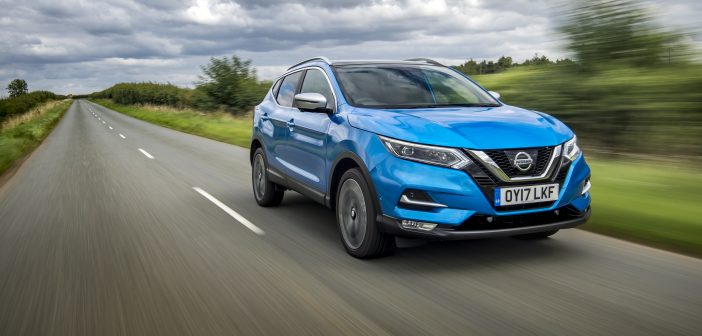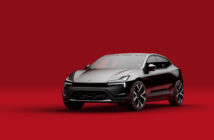The Nissan Qashqai is Europe’s best-selling urban crossover and is now available with significant enhancements which further develop its premium character. The upgrades focus on four areas – a contemporary new exterior design; higher levels of interior quality; improved driving performance; and the addition of new Nissan Intelligent Mobility technologies to deliver even greater levels of customer comfort, reassurance and trust.
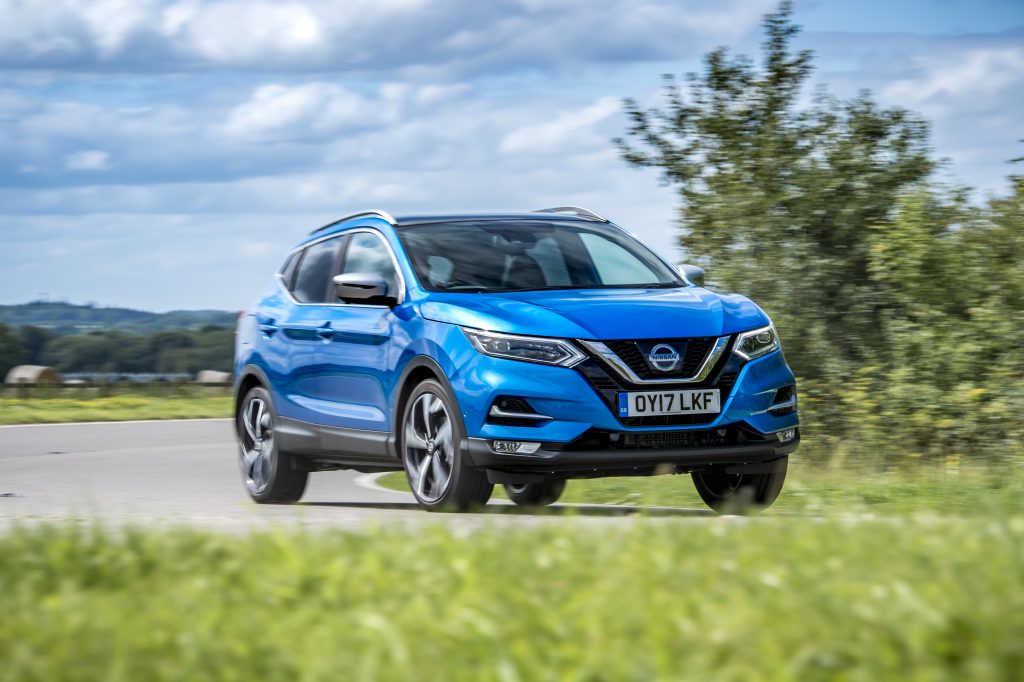
First launched in 2007, its grade structure has evolved with the introduction of Tekna+ grade, setting a new benchmark in luxury within the C-SUV crossover segment. There’s also a number of under-the-skin improvements to refine its handling performance.
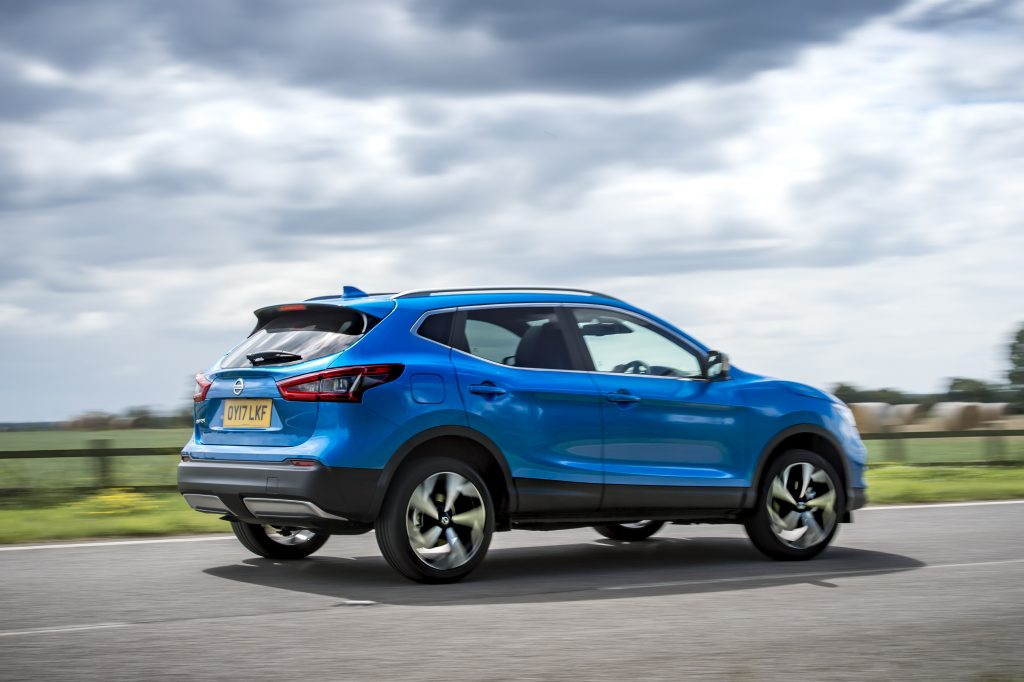
Innovative technologies have been added while others have been upgraded with new safety features. For customers seeking new levels of driving flexibility and greater freedom when they want it, the new Qashqai will be available with ProPILOT, Nissan’s autonomous drive technology.
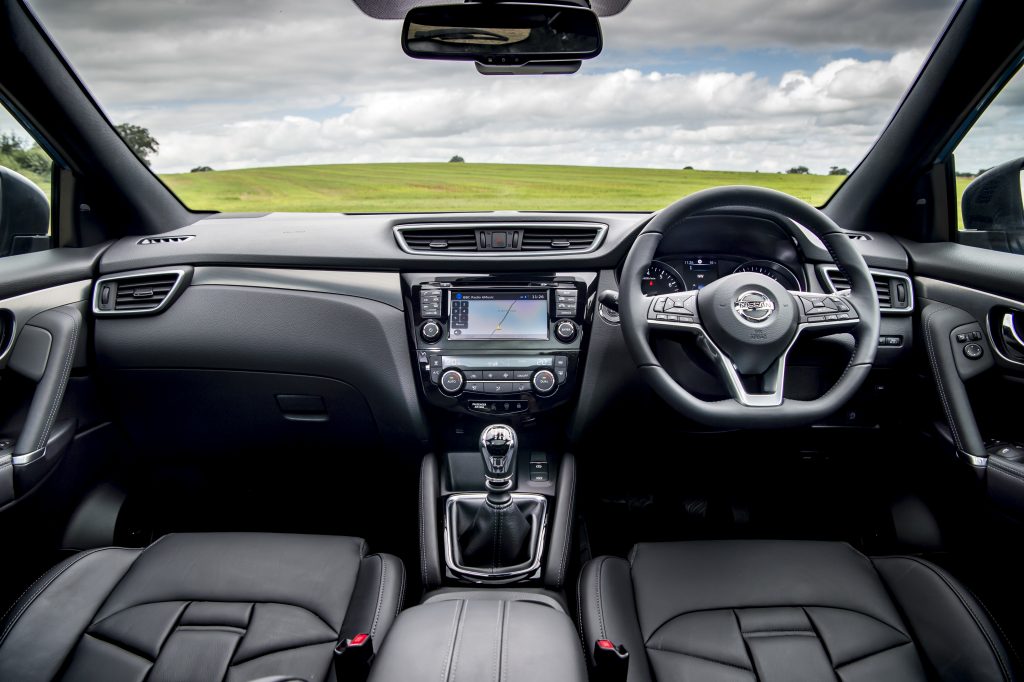
Philippe Saillard, Senior Vice President, Sales & Marketing, Nissan Europe, commented:
The second-generation Nissan Qashqai has been an outstanding ambassador for our innovative crossover range and the Nissan brand since its launch in 2014. It has been a sales phenomenon, keeping us at the number one position in the segment. With these premium enhancements to its design, quality, technology and driving dynamics, we are confident this will continue.”
The Qashqai’s improvements have been carried out by Nissan engineering teams based in the UK, Spain and Germany. The car continues to be built at Nissan’s state-of-the-art manufacturing facility at Sunderland, UK, one of Europe’s most efficient automotive plants.
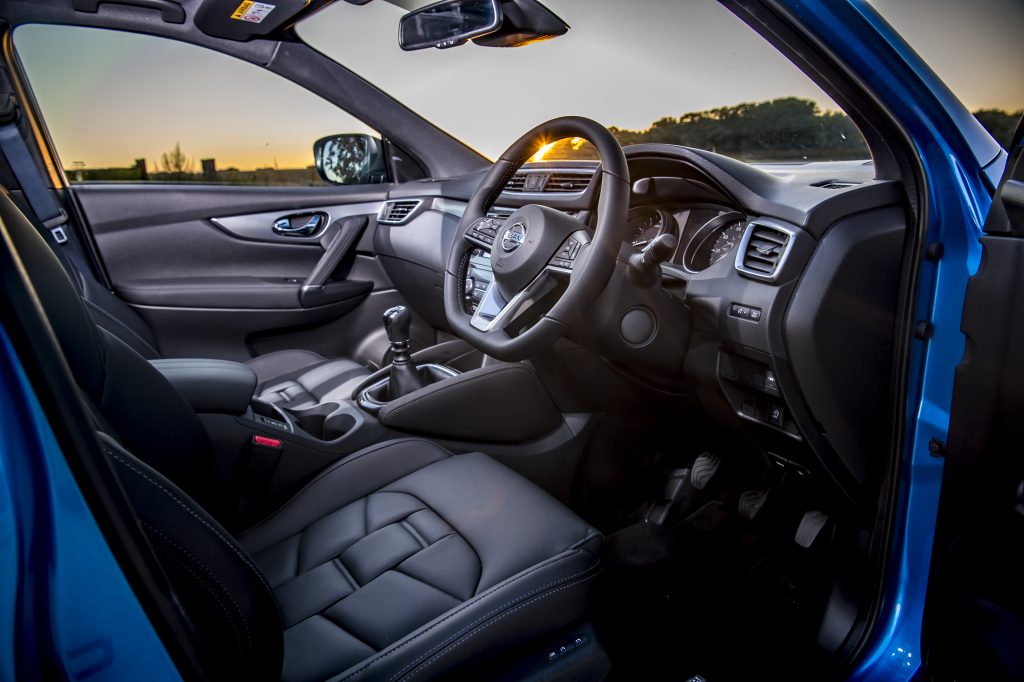
Unveiled at the 2017 Geneva Motor Show, the new Nissan Qashqai is now on sale in the UK. Prices start from £19,295 for the 1.2 DIG-T 115 petrol Visia 2WD 6-speed manual, up to £27,830 for the impressively equipped Tekna+ with equivalent 1.2 DIG-T 115 petrol powertrain.
The new Nissan Qashqai in detail
The Nissan Qashqai has guaranteed its place in the automotive history books. It pioneered the C-SUV crossover segment, and even though there are now more than 20 rival products on sale, the Qashqai remains the class benchmark with an unrivalled market share of 10.3%.
Quite simply, Qashqai is the most successful model in Europe in Nissan’s 83-year history, with approximately 2.3 million sold since the original version was launched in 2007. It has won more than 80 awards, including 19 ‘Car of the Year’ titles.
It has also defied traditional automotive product lifecycles. March 2017 was officially its most successful sales month ever across Europe, with more than 33,000 units sold.
At the heart of the Qashqai’s appeal for more than 10 years has been its position as the ultimate urban crossover. It successfully blends the practicality and desirability of an SUV with the footprint, driving dynamics and running costs of a hatchback. The significant new enhancements will underpin and strengthen the Qashqai’s position as Europe’s number one crossover.
As with all Nissan vehicles, every upgrade – no matter how large or small – has been undertaken with customers in mind and is based on their feedback. Research revealed a desire for exterior styling changes to create a more contemporary and sophisticated look; new premium features and choices for customers opting to buy higher grade models; plus extra refinement and new safety technologies when behind the wheel.
The new Nissan Qashqai delivers all this and more.
The ultimate Qashqai: Tekna+ creates exclusive new premium choice for customers
New to the Qashqai range is the addition of a fifth grade, Tekna+, which sits as the flagship of the line-up above Visia, Acenta, N-Connecta and Tekna. With exclusive new premium features as standard, Tekna+ is aimed at buyers seeking the ultimate Qashqai.
In the cabin, the new premium seats are trimmed in the highest-quality soft nappa leather, with luxurious 3D quilting on the centre panels – a first for Nissan in Europe. The design is replicated in the rear. Black leather is standard, with the choice of a rich plum colour as a £495 option.
The driver’s seat features electrically controlled four-way pneumatic lumbar support – another first for Nissan Europe. This allows drivers of all sizes to fine-tune their seating position, enhancing comfort and reducing fatigue. A seat memory function with two stored positions has been added, linked to the door mirrors. This is a unique feature on any Nissan Europe model today, with operation via buttons on the seat’s lower finisher.
Standard on Tekna+ is the new BOSE Premium eight-speaker audio system (see below for further details).
Externally, Tekna+ comes with premium gloss silver door mirror caps and roof rails.
Interior enhancements boost new Qashqai’s premium appeal
The impact of the premium upgrades to the Nissan Qashqai is most obvious in the cabin. They have resulted in the highest levels of perceived quality and refinement, a more driver-oriented interior and an enhanced feeling of total control.
Entering the car, the striking new steering wheel is the first thing drivers will notice. It echoes the design of Nissan’s newest models globally, including the all-new Micra and the new X-Trail, and is standard across the Qashqai range. Now D-shaped, the horizontal base means easier entry and exit for the driver, as well as providing a sportier look and feel.
The steering wheel’s compact central hub is smaller than before and the three spokes are slimmer, creating an upper space that’s larger by 17% to improve instrument visibility. The four-way controllers for the combimeter display (left spoke) and cruise control (right spoke) are new, and offer customers more intuitive use and reduced ‘eyes off the road’ time.
The rim’s width has been widened – from 34mm to 37.5mm – to provide a more comfortable and safer grip. A new premium style comes from the satin silver detailing on the central spoke, which echoes the shape of Nissan’s iconic ‘V-motion’ front grille.
Many other areas of the cabin have been upgraded. The air vents and interior door handles are finished in higher-quality, more tactile materials, while smart new stitching has been added to the centre console armrest between the two front seats from Acenta grade. The Qashqai’s headliner is now dark from Tekna grade. For customers choosing a Qashqai with the XTronic automatic transmission a leather-style gaiter has been added to the gear selector.
One-touch power window switches are now featured on all four doors and standard across the range. Additionally, all windows can be opened and closed together remotely via the key fob – for example, to help cool the vehicle quickly on hot days.
New premium seats for enhanced comfort
The high level of comfort in the Qashqai has always been praised by customers. To further add to its premium appeal the front seats have been completely redesigned on N-Connecta grade and above.
Now monoform in style, they feature an extended base and bolster shape for additional support. They have a higher back and tapered shoulders, creating a roomier cabin environment, a more cossetted feeling for the occupant and improved visibility for rear passengers.
The back of the front seats has been redesigned, with a new and more scratch-resistant plastic trim and two useful map pockets. This slimmer finish improves knee room for rear seat passengers.
Acenta grade benefits from a new and more durable upholstered finish to the existing seat design.
Customer feedback has led to improvement of the Qashqai’s two infotainment systems. DAB digital radio is now standard for the first time (in most markets) while the NissanConnect touch-screen satellite navigation unit (standard on N-Connecta grade and above, optional on Acenta) features a smart new user interface that’s more app-like in appearance. Where the NissanConnect system is fitted, the new Qashqai now features a ‘shark fin’ roof antenna for improved reception and a more contemporary finish.
For better performance during hands-free telephone use, the integrated microphone has been relocated within the overhead map lamp unit.
The Qashqai’s light and spacious interior makes it a versatile vehicle for up to five occupants, with clever storage solutions and practical features for singles, couples or families. The boot is a truly flexible load space, with a carrying capacity of 430 litres which increases to 1,598 litres when the 60:40 split rear seats are folded flat. The boot features Nissan’s innovative Flexible Luggage Board System, which allows for shelves and dividers to be adjusted in any one of 18 configurations.
All-new BOSE Premium sound system
Reflecting customer demands for a superior audio option, the Qashqai is available with an all-new eight-speaker system. Supplied by BOSE, Nissan’s premium audio partner, it features two 25mm tweeters at the base of the windscreen, a 165mm woofer in each front door and a 130mm mid-range speaker in each rear door. Two 115mm woofers are housed in a 7.7-litre custom-engineered enclosure mounted in the spare wheel well. A BOSE digital amplifier with eight channels of custom equalisation and digital signal processing is mounted under the passenger seat.
The result for customers is the most complete sound system ever offered in a Nissan Europe vehicle. It creates a wider soundscape for a concert-like listening experience, with clarity of acoustics and minimal distortion at higher volumes.
Adding the BOSE Premium sound system to the Qashqai means the range of audio units in the car has increased from two to three. The two existing units have been retuned to optimise the sound quality based on the interior changes. The result is improved performance with enhanced tonal balance, particularly on bass, for the driver and all passengers.
Exterior upgrades for a more contemporary design
The most dramatic enhancements to the Nissan Qashqai are to its exterior. Featuring a contemporary new look – a style Nissan calls ‘Premium Dynamism’ – the upgrades are visible from every angle.
The front of the Qashqai has been completely revised, with an integrated new front bumper fitted as standard. It features much greater use of the car’s body colour, with the visible black plastic benefiting from a more premium gloss finish. Vents on each side aid engine cooling.
Mid-way down the bumper, the two horizontal finishers are new. They are coloured black on Visia and Acenta models and satin silver on N-Connecta and above. Front fog lamps – now more integrated and in a lower position – are standard from Acenta grade.
At the heart of redesigned front face of the Qashqai is the latest incarnation of Nissan’s iconic ‘V-motion’ grille, which frames the new Nissan badge. There are two versions of the badge. From N-Connecta it has a completely flat finish; this is because the upgraded radar which forms part of the Qashqai’s Intelligent Emergency Braking (IEB) system is now located behind it. A flat finish allows radar waves to pass through it unhindered. Previously the radar was fitted lower down the grille and to one side. A second version of the badge, contoured in a more traditional way, is fitted to cars without IEB.
Barely noticeable thanks to innovative Nissan engineering, the grille’s chrome surround now houses the front camera that provides part of the image for the car’s Intelligent Around View Monitor, Nissan’s innovative 360° parking camera system. Previously it was part of the Nissan badge.
Framing the grille are new headlamp clusters, with much clearer design differentiation between the halogen units on Visia, Acenta and N-Connecta grades and full LEDs on Tekna and Tekna+ (optional on N-Connecta).
On the halogen lights, the ‘boomerang’ Daytime Running Lamp (DRL) signature is new, consisting of nine LEDs rather than six and a new thicker lens. The result is a more contemporary and premium appearance.
The unit’s dipped beam is carried over from the previous model with identical performance. On high beam, a new reflector design has been incorporated with a wider beam pattern to improve night-time visibility. The size of the integrated indicator has also been increased.
For Qashqai models with full LED lamps, the ‘boomerang’ DRL signature is also new, extending right across the top of the lamp unit. On dipped beam it now features Adaptive Front Lighting System (AFS). This means dynamic cornering lamps which operate in conjunction with the vehicle’s speed and steering inputs. This is the first use of AFS with High Beam Assist for Nissan in Europe, and means greater illumination of a corner’s apex for better visibility and road safety.
On high beam, the new integrated DRL / indicator light unit consists of four new LED reflectors.
The clam-shell bonnet has been redesigned with a straight-line leading edge rather than a single curve from side to side. Sharp new creases are prominent in the bonnet’s surface; with a radius of just 5mm they are the tightest creases ever created at a Nissan Europe manufacturing facility.
At the rear of the new Qashqai, the resigned bumper creates a more contemporary shape and more premium finish. For the first time there are two distinct bumpers depending on the grade of car chosen. The design is the same, but the lower apron features satin silver inserts on N-Connecta and above.
The Qashqai’s ‘boomerang’ LED light motif has been extended across the whole lamp, adding visual width to the car’s rear. A 3D aerodynamic element has been designed into the lens casing to make a small contribution to reducing drag, lowering running costs for owners. The interior of the rear lamp is now darker than before. On the roof, the new shark fin antenna is clearly visible where fitted.
Attention to design detail is a key component of the Qashqai upgrade, and nowhere is that more evident than with the rear parking sensors. Previously they were integrated into the bumper but did not sit completely flush to the surface. Now they are flush. The difference is small but significant, helping to illustrate the car’s new premium quality.
In profile view the enhancements to the Qashqai are expressed through a new range of premium alloy wheel designs in 17, 18 and 19-inch sizes. All have been aerodynamically optimised to reduce drag. The largest size features two design elements which are new for Nissan Europe, and perfectly illustrate the new ‘premium dynamism’ of the Qashqai. Small steps have been created all round the circumference of the one-piece machined alloy rim, while each of the five spokes has a very subtle concave finish to its surface.
The changes to the Qashqai have increased its overall length by 17mm, with the total moving from 4,377 to 4,394mm. Width (1,806mm) and height (1,595mm) remain unchanged.
The Qashqai’s palette of exterior colours, with solid, metallic and pearlescent finishes, is enhanced with two vibrant new choices for customers who want to stand out from the crowd. These are Vivid Blue and Chestnut Bronze.
An even more confident drive
Confident drive is what Nissan calls a common product attribute – a feature which is integrated into all its vehicles around the world. It means a smooth and refined feeling on the road, with precise and stress-free steering and handling. It’s measured and benchmarked in three scenarios – on motorways, on country roads and in the urban environment.
The Nissan Qashqai has always been renowned for its confident drive. However, there have been numerous upgrades to the new Qashqai’s performance on the road. While they represent some of the most significant enhancements to the car, they are not all immediately visible to the customer. However, the results can be easily perceived, leading to even greater feelings of customer safety and trust.
The development team at Nissan Technical Centre Europe used insight from existing Qashqai owners and their own research. It led them to focus on upgrades to the Qashqai’s ride, handling and steering to improve it even further.
On ride comfort, the priority was calmer body motion and improved impact shock. This was achieved by retuning the dampers, reducing the single wheel spring rate, and modifying rubber components. The anti-roll bar stiffness has been increased to maintain handling performance. There is now reduced body motion when going over large bumps thanks to changes to the car’s Active Ride Control system.
To enhance handling, the engineering team has created a more secure feel and improved line traceability through corners. This has been achieved with a new thicker steering shaft and changes to the steering effort build-up around dead centre.
On steering, a new technology called Active Return Control means the steering wheel now returns to centre more naturally, with improved precision during driving. The assembly behind the new steering wheel features a new dynamic damper which has resulted in less vibration reaching the driver’s hands.
Improved NVH refinement for an enhanced customer experience
There are significant improvements to noise, vibration and harshness (NVH) performance on the new Qashqai. More sound insulation material, and material of a higher quality, has been added inside the front doors and behind the rear wheel arches. Additional sealing around the front doors has been integrated, while the rear door glass is now thicker – from 3.15mm to 3.85mm – to improve the rear passenger experience.
The result is that road and wind noise in the cabin have been reduced on every Qashqai model. There is also less engine noise ingress on the 1.6-litre diesel thanks to powertrain calibration improvements.
For customers, the quieter cabin creates a more premium feeling and lowers fatigue levels. It also improves the audio experience and performance of the Bluetooth hands-free telephone. The change has been quantified by Nissan engineers as a 5% improvement in speech intelligibility during in-car conversation, which is a significant step.
Aerodynamic performance has always been a strong part of the Qashqai package and contributes to low running costs for drivers. Even after so many exterior design changes, the new model retains its drag coefficient of 0.32 – among the best in the class. That has been aided by new ‘vortex generator’ technology fitted to the underside of the car’s front bumper. Normally seen only in the aircraft and aerospace industries, these small raised sections on the bumper’s smooth surface break up airflow under the car. This helps to reduce drag and improves wind noise. Nissan believes this is a new innovation in automotive aerodynamics and a patent application has been filed.
New Nissan Intelligent Mobility technologies, including ProPILOT autonomous drive
Nissan Intelligent Mobility is the name for the brand’s advanced technologies which make its cars more desirable by redefining how they are driven, powered and integrated into society. The goal is to make Nissan drivers feel more confident, excited and connected, while also enhancing road safety.
Since its launch in 2007, the Qashqai has been at the heart of Nissan’s desire to democratise this technology. With the launch of the new Qashqai, that commitment to customers is extended even further.
In Spring 2018 Nissan will introduce ProPILOT on the new Qashqai. It’s the first stage of the brand’s journey to autonomous driving, giving drivers more freedom by allowing them to automate the mundane elements of their motoring life if they wish.
ProPILOT will control the steering, acceleration and braking in a single lane on highways during heavy traffic congestion and high-speed cruising. It is based on three technologies – Lane Keep Assist (LKA), Intelligent Cruise Control (ICC) and Traffic Jam Pilot (TJP). Intuitive to use, ProPILOT will be activated via a button on the Qashqai’s steering wheel. Information will be displayed in the combimeter between the instrument dials. Further details on ProPILOT will be given nearer to its launch.
New Nissan Intelligent Mobility technologies have been added to the Qashqai. Rear Cross Traffic Alert, to mitigate the risk of low-speed impacts when reversing out of a parking space, is now available for the first time. If the driver attempts to reverse when an approaching vehicle is detected, the system gives visual and audible warnings.
Intelligent Emergency Braking has been available on Qashqai from launch in 2014, and has been upgraded with Pedestrian Recognition from Autumn 2018. This innovative technology helps to avoid or mitigate collisions with pedestrians using a combination of forward-facing radar and a camera. Blind Spot Warning is now based on radar data rather than camera images, which means it operates over a wider arc and with improved accuracy of detection.
The Qashqai continues to be offered with Traffic Sign Recognition, Intelligent Driver Alert, Intelligent Park Assist, Intelligent Around View Monitor and Lane Departure Warning. Next-generation control modules have been added to many of the car’s technologies to optimise performance.
New to the Qashqai is a technology called Stand Still Assist (SSA), which supplements Hill Start Assist (HSA) on cars with a manual transmission. SSA holds the car in a stationary position for up to three minutes, after which time the parking brake is automatically activated. SSA works on inclines, declines and on the flat, allowing the driver to take their foot off the brake. This improves safety, boosts driver confidence and reduces fatigue. A green light on the instrument cluster indicates when it’s activated.
The new Qashqai maintains its 2014 five-star Euro NCAP safety rating.
Efficient powertrains, including class-leading 99g/km CO2 emissions
The Qashqai’s range of efficient engines has been carried over, offering the choice of petrol or diesel, six-speed manual or Xtronic automatic transmissions, and two or four-wheel drive to meet every type of customer need. The line-up includes the 1.5-litre 110PS diesel which, with CO2 emissions of just 99g/km and fuel economy of only 3.8 litres/100km, is the segment leader.
Standard equipment, options and accessories
Every new Nissan Qashqai comes with six airbags as standard, plus driver assistance systems including anti-lock brakes, electronic brakeforce distribution and stability control. Other standard equipment includes manual air-conditioning, Tyre Pressure Monitoring System, DAB digital radio (in most markets), Bluetooth connectivity, cruise control with speed limiter, and electrically adjustable heated door mirrors.
Depending on the grade chosen, available features include dual-zone climate control, automatic headlights and wipers, folding door mirrors and privacy glass. Many of the higher-grade features are available as optional extras on lower grades. Additional options include the full-length panoramic glass roof with one-touch shade, exterior styling plates and side styling bars. Genuine Nissan accessories include a dog guard, roof bars and a fixed towbar with electric hook-up.
Equipment levels on the new Qashqai vary across European markets, so please refer to local Nissan communications representatives for exact details.

